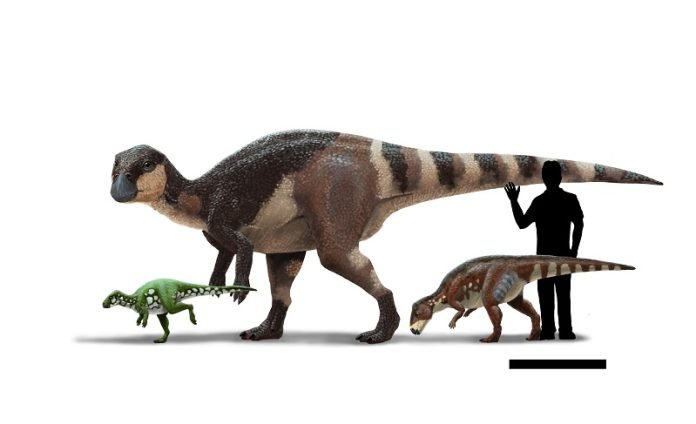
When we think about dinosaurs, we usually imagine famous ones like T-Rex or Triceratops.
But did you know Europe had its own special dinosaurs?
Around 100 to 66 million years ago, during a time called the Late Cretaceous, Europe was made up of many islands.
The dinosaurs living there were very different from those in other parts of the world. They were often smaller and adapted to island life. One of the most interesting groups was the Rhabdodontids.
Researchers from universities in Germany, Hungary, and Romania have studied these dinosaurs and shared their findings in a scientific journal.
Felix Augustin, the main author, gives us an idea of what these dinosaurs were like.
What Did They Look Like?
Rhabdodontids were not very big. They usually grew to be about 6 to 20 feet long.
They walked on two legs and had a sturdy body with strong back legs and short front legs. Their tails were long, and their heads were big but narrowed at the snout.
They had strong jaws, big teeth, and a beak that was likely covered in a tough material called keratin. This all suggests they were well-suited for eating hard plants.
Were They Social?
In some cases, bones of Rhabdodontids of different ages have been found together.
This suggests they liked to hang out in groups.
Where and When Did They Live?
What makes Rhabdodontids really special is that they were only found in Europe and lived there between 86 to 66 million years ago.
So, they were unique to these European islands during the Late Cretaceous period. Currently, there are nine known species of these dinosaurs.
Their bones have been found in five European countries: France, Spain, Austria, Hungary, and Romania.
Why Did They Die Out?
They disappeared in Western Europe around 69 million years ago, perhaps because the plants they ate were affected by changes in the environment.
However, in Eastern Europe, they managed to survive until almost the end of the Cretaceous period, around 66 million years ago.
Much More to Learn
Rhabdodontids are still a bit of a mystery. We have never found a complete skeleton, so we have many more questions than answers.
For example, we don’t know much about how they moved or more details about what they ate.
Felix Augustin says that while the first Rhabdodontid species was named over 150 years ago, the latest was identified as recently as November 2022. That shows that we are still learning about these unique creatures.
He also points out that when we talk about dinosaurs, we often focus on the ones found in North America and Asia.
The Rhabdodontids remind us that Europe had its own special dinosaurs that deserve more attention. In fact, many new fossils have been found recently and researchers are eager to study them.
To learn more about these fascinating creatures, a new research project is being started. The aim is to understand better these dinosaurs that were once the rulers of Europe’s ancient islands.
So, the next time you think of dinosaurs, remember that Europe had its unique stars too!
Follow us on Twitter for more articles about this topic.
Source: Pensoft Publishers.



